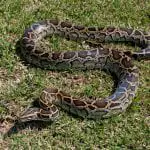A lot of people will think that snakes of all types eat only mammals or rodents and a bit of something else. However, snakes living in the forest are opportunistic carnivorous animals as they eat whatever they feel they can eat.
Overview of Snake’s Diet
Snakes tend to be so diverse in terms of size. Some of them are such small species that are just a few inches long, while others tend to be giants. The smallest snake can be the thread snake, while the biggest one will be anacondas and pythons.
Different snakes eat different things. Those snakes that are smaller will naturally go for smaller animals like insects, rats, birds, eggs, frogs, fish, smaller mammals, and lizards. The larger the snake, the bigger the animal it will eat. Constrictors such as the green anacondas and reticulated pythons can eat large animals like pigs and deer. They can even take down fierce creatures like alligators and crocodiles.
Though some snakes evolved to take a generalist diet such as the eastern indigo snakes, still some species enjoy special diets such as the egg-eating snakes, which eat nothing else but eggs. Some snakes tend to eat their fellow snakes, such as the king cobra and king snakes such as the California kingsnake.
Snakes do create a wide-ranging group. They also developed various hunting techniques based on their habitat and size. Some species, such as the blue racer, actively hunt other animals for food.
Other snakes lie hidden as they wait for the perfect time to catch their victims. They depend on their camouflaging ability, which is true, especially for a puff adder. On the other hand, the desert-dwelling sidewinder will hide underneath the sand and will come out only when some animals pass by.
Snakes go further as they use tricks that fool their innocent victims. They often use these tricks when they try to act as non-living objects so that they can come close to other animals and eat them. For example, the tip of the tail of a young cottonmouth snake looks like a worm, and the snake uses it to attract prey.
Snakes are known to be carnivorous. However, some species tend to pick exotic animals. These snakes may eat or not eat rats. Instead, they look for those animals classified as invertebrates.
Invertebrates – What Are They?
In the animal world, creatures can be vertebrates or invertebrates. The invertebrates are those animals that don’t have a backbone. These include worms, insects, snails, crabs, spiders, and a lot more. It’s the only kind of food that these snakes choose during their lifetime. Many of the invertebrate-eating snakes live a simple but unique way of living as they often stay underground under the decaying and soiled plant matter with organic substrates.
These snakes are specifically adapted to their environments. Though a few of these snakes have less information available about proper husbandry, some species adapted well and lived happily in captivity for as long as a natural-looking habitat is available.
Invertebrate-eating snakes have extraordinary characteristics that let them inhabit this niche and be on a very special diet. In most cases, these snakes are small as they measure below 12 inches long, but every species comes with a unique lifestyle.
Top 7 Invertebrate-Eating Snakes
The invertebrate-eating snakes are so interesting. Though they could be shy and elusive, these snakes can also be seen together with other species. Invertebrate-eating snakes may live in swamps, rainforests, suburban areas, scrublands, deserts, and farms. Every species is unique, just like its habitat. Outlined below are the coolest invertebrate-eating snakes.
#1. The Cloudy Snail Eater
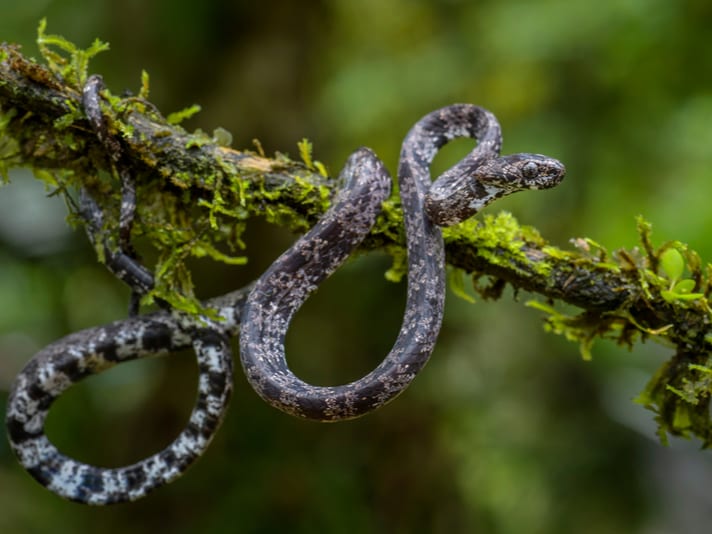
Sibon nebulatus is a snake that lives in leaf litter in the rainforests and treetops found in the Caribbean, and South and Central America. This snake can be hard to see as it can blend it well with the environment, thanks to its cryptic coloration.
The cloudy snail eater seeks out slugs and snails. This nocturnal snake can be found in the rotten logs in which it stays dormant in the daytime. If captured, the snake moves its head strategically to remove the lingering sticky mucus coming from the invertebrates it consumed.
#2. Flowerpot Snake
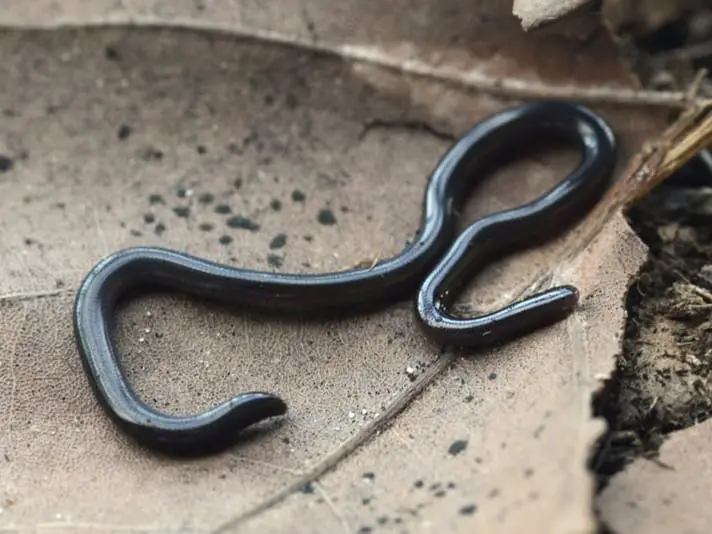
People have been recognizing and calling this snake with different names. Some call it the flowerpot snake, while others name it brahminy blind snake or worm snake. The flowerpot snake looks like the earthworm. It’s so small and with smaller eyes, because it doesn’t need them underground.
This snake became an invasive species in several countries out of the native range of Southeast Asia and up to Florida. This little snake hitched rides through an agricultural trade that gave it the nickname called “flowerpot snake.”
The flowerpot snake is more common in the soil, flower beds, rotten leaves or logs, and trash where they can find invertebrates like termites, larvae, and ants. It slithers faster to satisfy its cravings for invertebrates. It has a unique reproductive technique in which the female snake is asexually reproducing and will have all-female baby snakes.
#3. Crab-Eating Water Snake
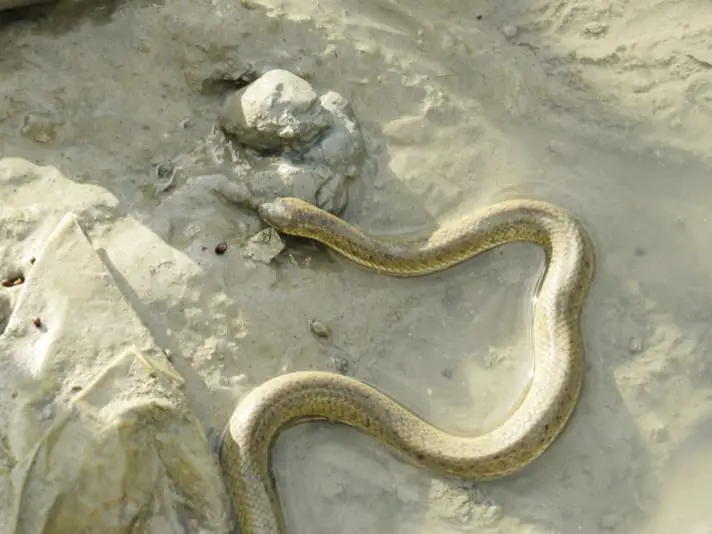
This snake is native to Australia. The crab-eating water snake has been known for its ability to break the food into two before swallowing it. This species lives in tidal mudflats, mangroves, wetlands, and swamps on a coast habitat.
Though it opportunistically eats crustaceans, it focuses on eating crabs as it leaves in the burrows made by lobsters and crabs. Since the crabs can regenerate their legs, the crab-eating water snake takes this opportunity to eat them. The snake pins the crabs and eats their legs one at a time.
#4. North American Crayfish Snake
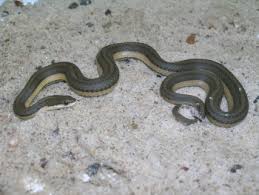
With 4 subspecies recognized, this snake feeds on crayfish, in which two of the recognized sub-species eat the same food items with the crab-eating water snake. The crayfish snake has hinged teeth that aid it in consuming a hard-shelled invertebrate.
The other sub-species wait until their victim undergoes a process called molting. Molting refers to the process in which an invertebrate sheds its hard shell, so the animal is soft and unprotected during this period. Other crayfish snakes wait for it, where it sniffs out the molting secretions from the crustaceans and consume them.
#5. Centipede Snake
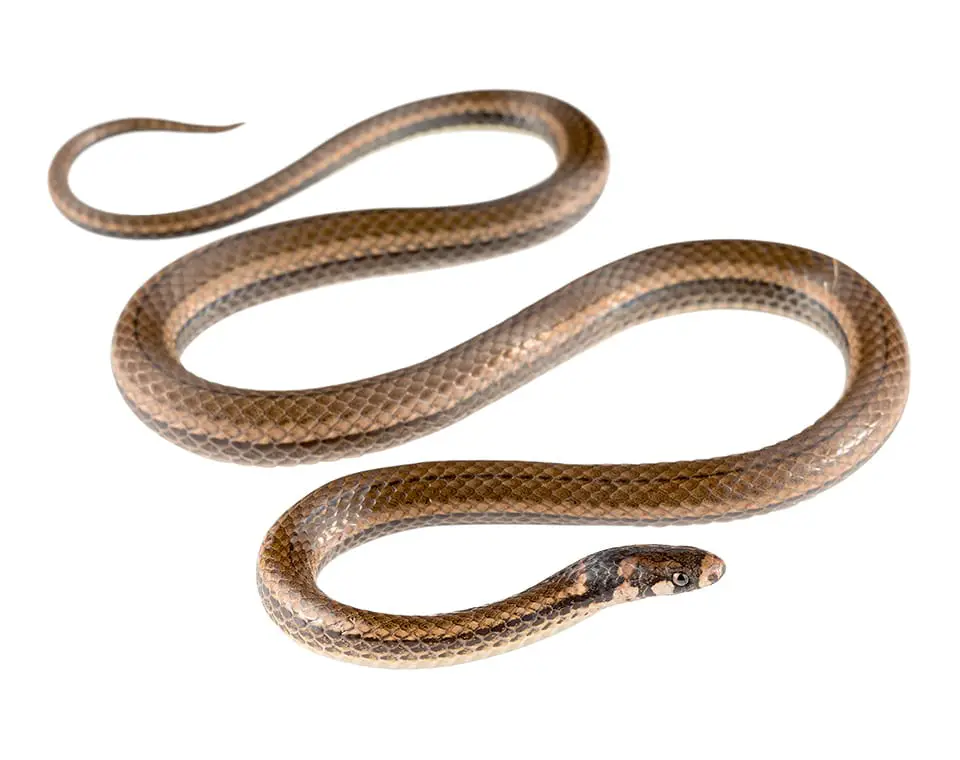
This snake seems to be among the most courageous of all invertebrate-eating snakes to consume crustaceans. It feeds on centipedes. In other cases, the centipede snake eats other invertebrates like spiders and scorpions.
This elusive snake lives in the South and North America, particularly in the areas with pinelands, swamps, and sandhills. The centipede snake is quite secretive, so people know less about its lifestyle and characteristics.
#6. The Garter Snake
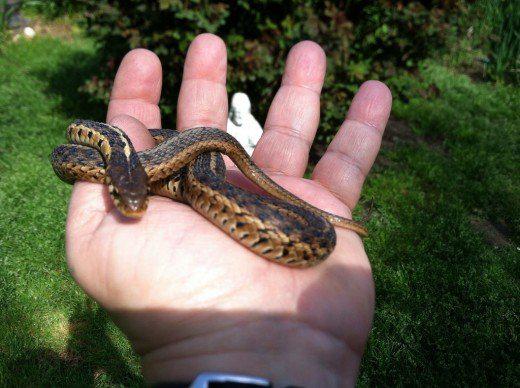
The garter snake is so common as you can see it even in your backyard. This snake is smaller, so it is a perfect choice for someone who does not want to keep a large snake. A garter snake can eat whatever it can overpower. Therefore, it can take on other animals aside from rodents. Its diet varies a lot, including tadpoles, fish, insects, lizards, earthworms, and frogs. In captivity, the garter snake eats fish and invertebrates, which many people find less obnoxious compared to rodents. Some species may hesitate to take the rodents.
Keep in mind that a garter snake must enjoy a wide variety of foods if it refuses to take the rodents. Also, remember that the feeding frequency for this animal will depend on the food you have introduced. For example, if a snake eats worms, then it must eat 2x per week. Fish eaters must eat every 5 days or more. Don’t forget to ask if the animal accepts non-live food before buying it. Also, do your homework and find out why you can’t feed a snake with live goldfish.
#7. The Smooth and Rough Green Snakes
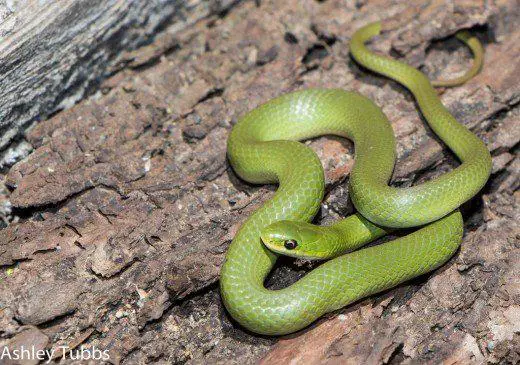
These snakes are somewhat related and with similar care, but the rough green snake is bigger and demands a wider enclosure. This snake eats insects. The rough green snake is good for intermediate and advanced reptile keepers as it tends to be so active, not tame, and unreliable. This snake is wild-caught in many cases.
Most of the wild-caught rough green snakes deal with stress. They may have problems with eating and with parasites. Hunters massively collect these snakes for the commercial pet trade. Thus, rough green snakes are affordable and readily available. Anybody who plans to keep a rough green snake should consider those factors first and foremost.
Soft and rough green snakes can eat soft-bodied invertebrates like spiders, crickets, caterpillars, moths, and soft-bodied beetle larvae. In some cases, they take some vertebrates like small lizards and tree frogs.
Conclusion
These snakes are so interesting, mainly because of their preferences when it comes to food. Many of them can become good pets, especially the garter snake. Perhaps, these invertebrate-eating snakes are easier to take care of because of their diet. If you are looking for great pet snakes, then these 7 snakes are truly worth considering.

